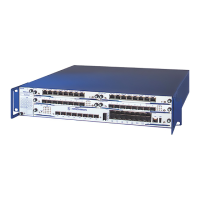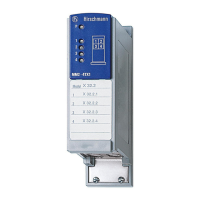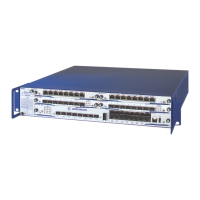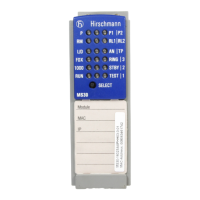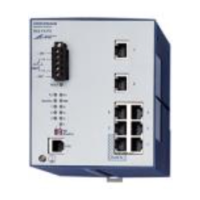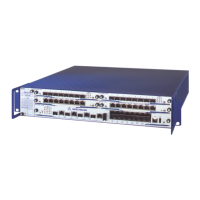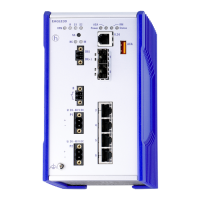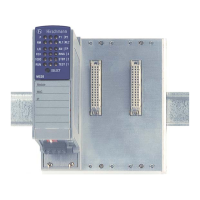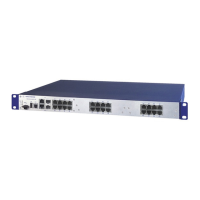Network Load Control
UM Basic Configuration L3P
Release
7.1
12/2011
8.6
VLANs
203
For further information on VLANs, see the reference manual and the
integrated help function in the program.
8.6.3 Double VLAN Tagging
For the devices MACH 1040 and MACH 4002-24G/48G.
Double VLAN tagging (VLAN tunneling) enables you to transmit from traffic
to layer 2. Double VLAN tagging allows you to avoid conflicts between the
VLAN IDs of the incoming traffic and the VLANs already set up your network.
You leave existing VLANs in your network unchanged and thus minimize
your configuration work. This applies to:
frames without VLAN tags,
frames with priority tags, and
frames with VLAN tags with any VLAN ID, including those
which you are already employing for other purposes in your network.
Applications include:
tunneling from any client traffic to layer 2,
bypassing restrictions to the number of VLAN IDs,
summarizing VLANs per port.
You can set up several tunnels with different VLAN IDs and thereby freely
select the Ethertype of the inserted tunnel tags for your network.
The ports participating in this VLAN tunnel are either:
Access ports on which your network receives and sends external traffic,
or
Core ports which are all located inside your network and are connected
with another core port.
To construct a VLAN tunnel, set up a selectable VLAN on your devices and
put the access and core ports in this tunnel VLAN. Access ports are untagged
members in your tunnel VLAN and have the tunnel VLAN ID as their port
VLAN ID. Core ports are tagged members in all tunnel VLANs and do not
need a port VLAN ID. Also, increase the maximum size for frames on all
switches with core ports to 1,552 bytes.

